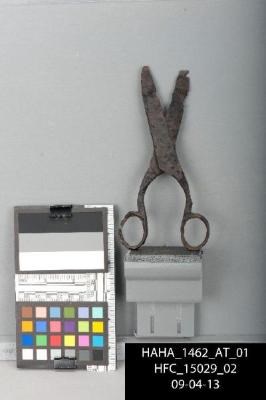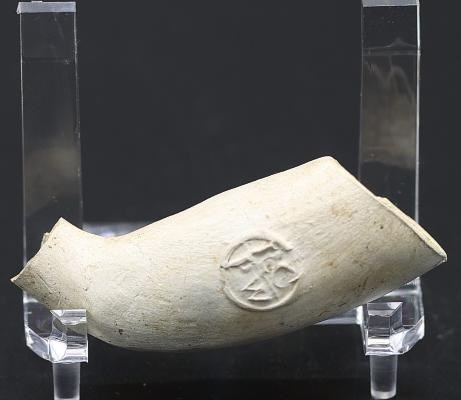

Left image
Right image

(NPS) The area that Harmony Hall stands on is known as Broad Creek. It was inhabited by American Indians for thousands of years before European settlers arrived. It was inhabited by the Piscataway Indians and other tribes throughout the 17th century. When settlers arrived, Piscataway Indians were occupying land four miles from Broad Creek. Settlement began in 1634 and English settlers were unable to settle in Broad Creek on first arrival because of their inability to devise a treaty with the Piscataway Indians. As they moved North during the late 17th century, they settled within Broad Creek with land grants from Lord Baltimore. The settlers and natives traded and negotiated on many occasions. The Piscataway Indians eventually fled because the settlers would not help in their protection from the Susquehannock tribes. By 1697, most of the native Piscataway Indian population had left. Broad Creek was developed into a British port town and community. 
The Mystery of the Red-Brick Manor
Harmony Hall, a stately red-brick Georgian manor house, has lived many lives from its possible construction in the early 1700s to today. 
(NPS) Want Water, just north of Battersea, was constructed by the Addison family in 1706. It was known as Lyles House and was occupied by William Lyles. Lyles was a close friend of George Washington whose estate, Mount Vernon, now stands on the opposite bank of the Potomac River in Virginia. The house was not taken care of during the twentieth century and collapsed in the 1970’s. The ruins remain today. 
(NPS/Megan Kearns) Battersea and Want Water were sold and passed down for years until both were purchased by Enoch Magruder in 1769. Magruder was the first to choose to settle and build on this land, therefore it is possible for Harmony Hall to have been built when he acquired Battersea. Magruder rented out the household at Battersea. By 1790, records of who occupied the house are inconclusive. Enoch’s widow, Meek Magruder, was on tax lists as the single head of the household. After her death in 1795, records show Enoch’s son Dennis and his son in law William Lyes paid the taxes for Want Water and Battersea. 
(NPS) According to the biography of Reverend Walter Dulany Addison, two couples rented the household at Battersea in 1792. He wrote that the couples believed this place to a source of happiness. This was only local legend but from then on it was known as its current name “Harmony Hall.” 
(NPS) The last private owner of Harmony Hall was Charles Wallace Collins. He bought the land in 1929 and temporarily called it “Broad Creek Farm.” He was originally from Alabama and wanted an estate outside of Washington D.C to model the plantations of the deep South. He spent much of his time restoring the household and, in the process, destroyed some of the surrounding structures. There is a canal on the land that was cut in 1749 by Humphry Batts, a shipbuilder who needed a place where merchant ships could anchor. The canal was dredged by Collins in the 1930s and it is called The Want Water Canal. To this day, it is one of the earliest canals dug in the American colonies. After his death, Collins’s wife, Sue Spence Collins, sold Harmony Hall and the land containing Want Water to the federal government in 1966. All sixty-six acres were acquired by the National Park Service. 
(NPS) |
Last updated: February 3, 2025
